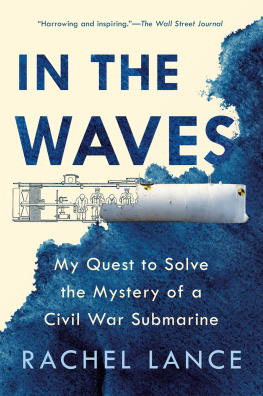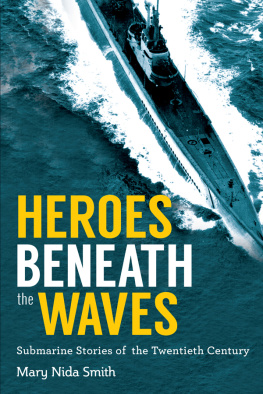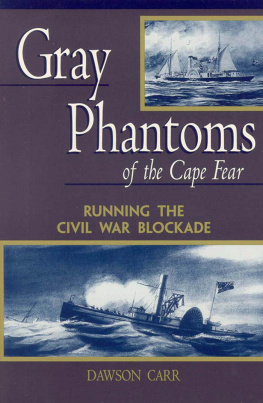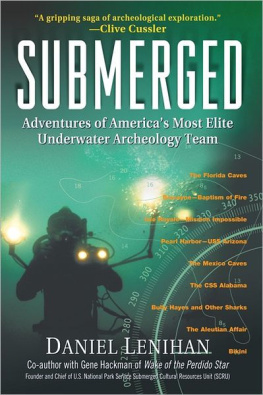
THE STORY OF THE
H.L. HUNLEY
and Queenies Coin
BY FRAN HAWK & ILLUSTRATED BY DAN NANCE
The Story of the H.L. Hunley and Queenies Coin is based on
extensive research in scientific and historical fact
as well as oral tradition. I believe this story is true,
even in the places where no proof currently exists.
Text copyright 2004 Fran Hawk
Illustration copyright 2004 Dan Nance
All rights reserved. No part of this book may be reproduced in any manner
without the express written consent of the publisher, except in the case of
brief excerpts in critical reviews and articles. All inquiries should be addressed to:
Sleeping Bear Press
315 E. Eisenhower Parkway, Ste. 200
Ann Arbor, MI 48108
www.sleepingbearpress.com
2004 Sleeping Bear Press is an imprint of Gale.
Printed and bound in China.
10 9 8 7 6 5 4 3
Library of Congress Cataloging-in-Publication Data
Hawk, Fran.
The story of the H.L. Hunley and Queenies coin / written by Fran Hawk;
illustrated by Dan Nance.
p. cm.
ISBN 978-1-58536-218-9
1. H.L. Hunley (Submarine)Juvenile literature. 2. Dixon, George, d. 1864Juvenile literature. 3. Marine engineersConfederate States of AmericaBiographyJuvenile literature. 4. United StatesHistoryCivil War, 1861-1865Naval operationsSubmarineJuvenile literature. 5. Charleston (S.C.)HistoryCivil War, 1861-1865Juvenile literature. 6. Charleston (S.C.)AntiquitiesJuvenile literature. 7. Gold coinsAnecdotesJuvenile literature. 8. Underwater archaeologySouth CarolinaCharlestonJuvenile literature. I. Title.
E599.H4H39 2004
973.7'7dc22
2004009803
For Jane Mentor Extraordinaire For Brian Hicks Co-author of Raising the Hunley And for Charleston Post and Courier Editor Steve Mullins I appreciate it.
F RAN H AWK
I would like to dedicate this work to the muses in my life, my beautiful wife, Meghan, and my beloved daughter, Aidan. Thank you for all your love, patience, and support. You are my guiding light and the source of all my inspiration.
D AN N ANCE

1862 Mobile, Alabama
Queenie Bennett gently pressed a gold coin into George Dixons hand. Hold this keepsake close to remember my love and bring you good luck, she said. George Dixon was a handsome gentleman. He looked down at the $20 gold coin and at the womans face on its surface. Like Queenie, curly hair fell around a face of great beauty. It was 1862 and George was leaving Mobile, Alabama to fight with the Confederate Army of the South.
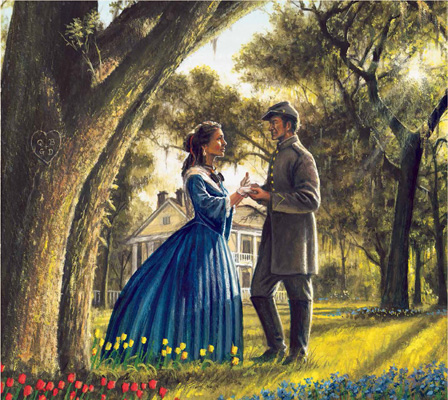
George slipped the gold coin into the left pocket of his trousers. Days later, he marched into war as a member of the 21st Alabama Regiment to join the army led by General P.G.T. Beauregard. At the Battle of Shiloh, during some of the most terrible fighting in the war, George felt a sudden sharp burning of a Union bullet in his thigh. He fell to the ground.
George was lucky. Queenies gold coin had stopped the bullet, saving his leg and his life.
When he returned home to Mobile, George had his precious gold coin inscribed:
Shiloh, April 6, 1862
My Life Preserver
GED
While he would always move with a limp, George would always walk with his lucky coin in his pocket and Queenie Bennett in his heart.
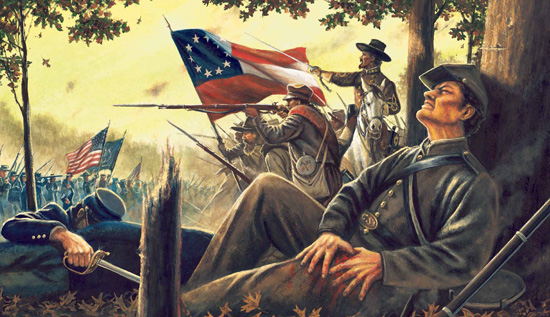
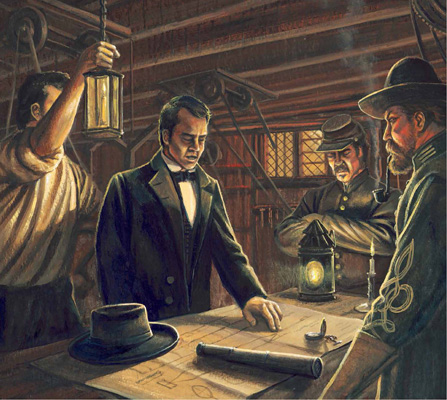
1863 Spring & Summer Mobile, Alabama
Though his wounds prevented him from returning to the battlefield, George and a group of men planned to build a fish boat, or submarine, that would sneak underwater to attack enemy ships.
The Union forces blockaded the port of Charleston, South Carolina. The Confederate troops, under General Beauregard, did not have the naval power to break the blockade. Their new fish boat might help open the flow of supplies to Charleston.
Learning and experimenting as they worked, the men molded iron plates into a sleek shape. They added fins, ballast tanks, weights, and gauges. The tube-shaped boat would be forty feet long and four feet deep. There would barely be room for eight or nine men, sitting on a wooden bench, turning the shaft that moved the propeller. Water would be allowed to flow into the tanks and then be forced out to make the craft float or sink in the water.
A long pole was affixed to the front of the submarine. It would hold an explosive, which would be jammed into the hull of an enemy ship. Seconds after attacking, the submarine would make its escape and a line would be pulled to set off the charge.
The most important job fell to the captain, who steered the vessel and operated the levers and pulleys to take in or push out ballast. Inside the submarine, the men would use candles for light.


Horace Hunley

Horace Hunley, a wealthy Southerner who lived in Mobile, helped George and the other men build and pay for the submarine. In honor of his support they called their new submarine the H.L. Hunley.
While the Hunley was being built, the blockade around Charleston tightened. General Beauregard sent a message to George and the group of men in Mobile. He asked that the Hunley be shipped immediately. It is, he said, much needed here.
The Confederate soldiers carefully loaded the Hunley onto two flatbed railroad cars. They covered the submarine with large swaths of cloth so that it could travel in secret. The Hunley was sent to Charleston without George.
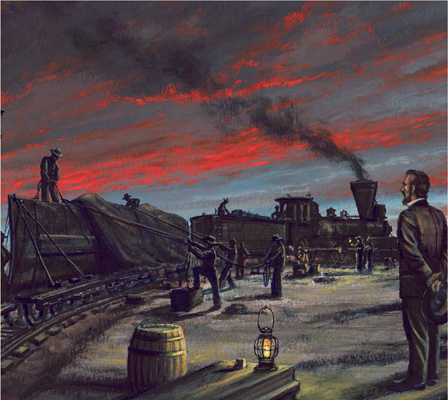
George was disappointed to be left behind. I know the fish boat better than anyone, he told Queenie. The others dont know how to handle her.
George was right. One disaster followed another in Charleston. The Hunley sank the first time when the wake of a passing ship swamped the submarine. Five of the nine crewmen drowned, but the Hunley was recovered. Eight new men volunteered, including Horace Hunley, for the second test. When a valve was left open, all seven crew members and the captain, Horace Hunley, drowned.
Back in Mobile, George vowed to take command of the Hunley. I think I can convince General Beauregard to use the fish boat, he told Queenie. Then he reached into the pocket of his pants. I will take your lucky coin with me, he said. Queenie smiled in agreement.

Next page


